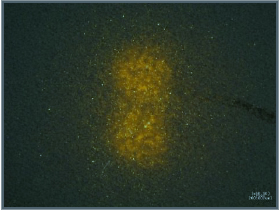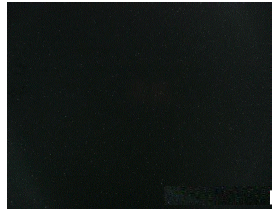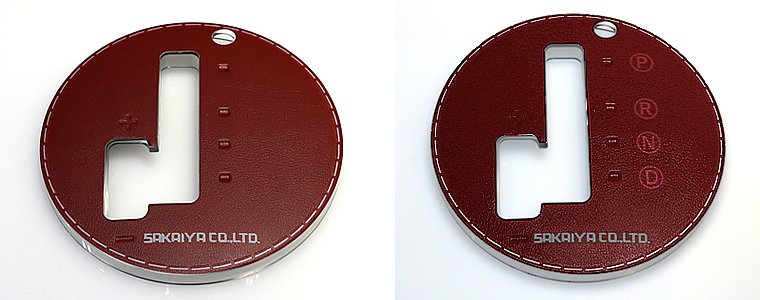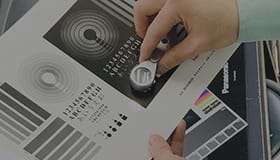Past events
Exhibition Report of 14th Automotive World
Event outline

The 14th Automotive World is an exhibition where the latest technologies of automobiles such as digitization, electrification, self-driving, and lightweight are displayed. We introduced latest technologies of inks and printing mainly about sensor inks and dead front printing supporting SHY TECH which provides safe driving and self-driving and necessary information when needed.
- Period
- January 19 - January 21, 2022
- Venue
- Tokyo Big site
- Official HP
- https://www.automotiveworld.jp/
List of Exhibits
- 1. Sensor ink contributing to self-driving and safe driving
- 2. Dead front printing (concealing printing) realizing high designability
- 3. Application of Dead front printing. Introducing “Changing”, changing the image with light source
- 4. Decorating technologies for non-contact switches applied in a variety of fields
- 5.”Shy Tech” technology
- 6. Inexpensive and lightweight countermeasure for electromagnetic wave shield. Introduction of Electromagnetic wave shielding inks
- 5.Click here for the exhibition video!
1. Sensor ink contributing to self-driving and safe driving
1. What is sensor ink (IR transmittable ink) ?
Sensor ink, also called IR transmittable ink, is a decorative ink which blockes visible light and UV rays causing sensor malfunction and transmits only infrared rays. By replacing the IR transmissive film that is used for an IR transmissive part with sensor ink, decorating IR transmissive part is possible. Moreover, sensor ink contributes to cost reduction because printing processes are fewer than film attaching processes.
(A)IR to be detected and visible light and UV rays causing malfunctions,
(B)Visible light and UV rays blocked (absorbed or reflected) by ink for sensor, (C)Transmitted IR

(1)Product body (PC, PET film, glass), (2)Sensor ink, (3)Sensor module
2. Seamless design with sensor ink
Conventional IR sensors used IR transmissive films for IR transmissive parts. This film makes a discontinuous design because colors and materials of the film are different from that of the main body, on the other hand, with sensor ink, it is possible to create a seamless design to the main body. The following shows a hotel locking system with a built-in infrared sensor that realizes a seamless design.
(A) Conventional IR transmission part (the design without continuity because the part material differs from that of the main body)
(B) IR transmissive part with sensor ink (seamless between the part and the main body)

Provided by the company: Shibutani Co., Ltd., Nanshin chemical industries Co., Ltd.
3. Application example of sensor ink used for LiDAR sensor
The following is a schematic diagram of the exterior of a car (PET film) and a built-in LiDAR sensor. In the image (A), regular black ink printed on the PET film, the image of the object cannot be obtained because infrared rays the LiDAR sensor emits are blocked. On the other hand, in the image (B), sensor ink printed on the PET film, the image of the object in front of the film can be obtained because infrared rays can transmit through the film.
(A) Regular black ink (because it blocks infrared rays, the image of the object in front cannot be obtained (red circle area))

(B) Sensor ink (because it transmits infrared rays, the image of the object in front can be obtained (red circle area))

4. Demonstration example of transmittance of sensor ink by infrared camera
The following shows (1) PET sheet printed with sensor ink and regular screen ink on the top and bottom of the PET sheet, and (2) an infrared camera (left photo). The hand was held behind the PET sheet against the infrared camera and the detected image was confirmed (right photo).

Below is the image of the above test with the infrared camera. The image of the hand held over infrared rays cannot be obtained in the lower part where regular ink is printed because infrared rays are blocked. On the other hand, the upper part where sensor ink is printed can obtain the image of the hand because infrared rays transmit. You can see the sensor ink has high transparency against infrared rays even when the images between a man outside the PET sheet and his hand are compared.

2. Dead front printing (concealing printing) realizing high designability
1. What is dead front printing (concealing printing) ?
Dead front printing is a printing expression that a design appears when backlight is illuminated. Dead front printing can be produced by multi-layer printing of matt clear, transparent color and a die-cut pattern. Dynamic designs creating surprises are possible by this dead front printing (concealing printing).
(1) Front: Matt clear, (2) PC substrate, (3) Back 1st layer: Transparent color, (4) Back 2nd layer: Outline pattern

(A) Printing, (B) Molding, (C) Backlight illumination (Characters appear! (Dynamic design creates surprises))

2. High Definition Ink supporting high-quality dead front printing
Black ink used for die-cut patterns should have excellent fine printability and high concealment so that dead front printing can realize high-quality image when backlight is illuminated. XIP-HF high opacity ink, which is High Definition Ink, provides both excellent fine printability and high concealment.
1) Excellent fine printability
Owing to excellent fine printability of High Definition ink, XIP-HF high opacity black ink can reproduce fine outline printing with a high degree of accuracy. When the following small die-cut patterns are compared, rough edges at the boundary are confirmed in the conventional ink, on the other hand, a smooth curve can be reproduced in High Definition ink.

(1) Conventional ink (rough edges occur at the boundaries), (2) High Definition ink (smooth curve is reproduced)
2) High concealment
Compared with conventional regular black ink, XIP-HF high opacity ink shows its higher concealment performance when they are printed under the same conditions. Even when they are compared with blacklight irradiation after printing, light is leaking out in the conventional ink, on the other hand, almost all light is blocked in high opacity ink.


Conventional ink
High opacity ink
| Conventional ink | High opacity ink | |||
|---|---|---|---|---|
| Mesh | 350 | 250 | 350 | 250 |
|
Ink layer thickness |
3.2µm | 4.7µm | 3.4µm | 4.6µm |
| OD value | 3.8 | 4.2 | 5.2 | 6.5 |
* The above is an actual measurement value at our company, not a guaranteed value.
3. Combination of authentic looking wood grain pattern and high quality dead front printing
Dead front printing can add new designs and functions in which high designability materials and light are combined. The following is the printing example in which a die-cut pattern with High Definition, XIP-HF high opacity black was printed on the PVC sheet realizing wood grain with authentic look and touch of sense. It obtains both sophisticated feeling of wood grain and high quality dead front printing including fine lines.
A small design including fine lines is beautifully expressed when the backlight is illuminated (right photo).

Provided by the company: C.I. TAKIRON Corporation
4. Combination of authentic looking leather and dead front printing
Dead front printing makes unprecedented designs that add lighting function to the sophisticating feeling of leather possible by utilizing light transmittable leather which has both designability of authentic looking leather and transparency.
No backlight illumination (left photo) and backlight illumination (right photo)

Provided by the company: Sakaiya Co., Ltd.
3. Application of Dead front printing. Introducing “Changing”, changing the image with light source
1. How “changing” works: Dead front printing of two images on a single part
By applying Dead front printing, it is possible to apply multiple stealth images to a single part. For example, by preparing two die-cut patterns, one with red light-blocking ink and the other with blue light-blocking ink, “changing”, between red and blue light image becomes possible.
(1) Surface: Matt clear, (2) PC substrate, (3) Back 1st layer: Transparent color
(4) Back 2nd layer: Red outline pattern, (5) Back 3rd layer: Blue outline pattern

The image can be switched by changing the red light to blue light.

2. Example of changing red to blue of large molded objects
Dead front printing also can be applied to large molded objects, as shown below.
Large molded object that resembles the rear of an automobile.

Provided by the company: Asano Laboratories Co., Ltd.
The word “STOP” is displayed when red light source is irradiated.

“MOVE” is displayed when blue light source is irradiated.

Irradiation of red and blue light source (images hidden by changing)

4. Decorating technologies for non-contact switches applied in a variety of fields
1. What is a non-contact switch ?
A non-contact switch can be turned on and off without touching it by a built-in infrared sensor detecting a hand held. By printing sensor inks on the infrared light emitting/receiving port, it is possible to create a design that does not make the user aware of the built-in sensor.
(1) Cover glass on which sensor ink was printed, (2) Sensor body (IC chip), (3) Infrared rays sensor receives and emits

2. Sensor ink that expands the possibilities of non-contact switches
Sensor inks allow adjustment of the transmission wavelength and degree of transmission to match the characteristics of the sensor that the non-contact switch is incorporated with. In addition, sensor inks provide more freedom in decoration on non-contact switches, making it possible to apply them in a variety of fields.
| Direction of decoration | What you want to achieve | What sensor ink can support |
|---|---|---|
| Show | To stand out as non-contact switch for infectious disease control | Free design of switches without physical limitations |
| Hide | Detect only specific conditions without making people aware of the sensor. |
Allow seamless design to hide the sensor (Application for design improvement and security measures) Capable of detecting and responding to the specific situation without the user being aware of it. (Application for power saving to control power supply depending on the situation. Details to follow, |
| Hide + Show | Hide the information when it’s not necessary and provide it when necessary | Combination with Dead front printing can provide “necessary information when needed”. (Shy Tech), (details to follow) |
3. Application of Non-contact switches for power saving
The following is an example of a locking system for a hotel that saves power by turning on the power only when necessary. In this locking system, the card reader is turned off during normal operation, and only the non-contact switch is activated. Only when the non-contact switch detects the act of a person unlocking the door, the card reader is turned on to unlock the door. This reduces the power consumption of the locking system. In addition, the locking system uses sensor-compatible ink to achieve a seamless design.
Normally, the card reader is turned off (left photo) and only turned on when a person unlocks the door (right photo).

Provided by the company: Shibutani Co., Ltd., Nanshin chemical industries Co., Ltd.
5.”Shy Tech” technology
1. What is Shy Tech ?
Shy Tech is a technology that eliminates the need for constant display of gauges and indicators, and provides the necessary information when it is needed. This technology makes it possible to use simpler and more beautiful designs for automobile driver seat and interior parts, which tend to be overloaded with information, without sacrificing convenience.
2. Realizing Shy Tech with non-contact switches and Dead front printing
In order to realize Shy Tech’s goal of “providing necessary information when necessary,” non-contact switches using sensor-compatible ink and Dead front printing will be effective technologies. For example, an area that was just a decorative surface can be converted into an area that provides information that was hidden by Dead front printing by using a non-contact switch to detect the need for information.
A non-contact switch detects the need for information (left photo), and Dead front printing provides the necessary information (right photo).

Provided by the company: Nisshinbo Micro Devices Inc.
3. What is Smart Surface ?
Smart Surface means literally a smart surface which indicates a surface material with multiple functions and high performance. We have developed the meaning of “Shy Tech” and consider it to be a technology that supports both “functional smartness” that displays the necessary information when it is needed and “design smartness” related to decoration.
Our High-Definition Ink contributes to the realization of this Smart Surface. In addition to the ability to reproduce materials with a sense of luxury, such as wood grain and marble, High-Definition Inks also demonstrate its power as high-opacity black inks with the fine printability and high opacity required for high-quality Dead front printing.
Real wood like design with High-Definition Inks (left photo) and information displayed with Dead front printing.

Provided by the company: KODENSHI TK CORP., NS Advantech Co.,Ltd.
An example of drawing a detailed marble pattern with High-Definition Ink to express the real feel of the material.

Convertech2019
6. Inexpensive and lightweight countermeasure for electromagnetic wave shield. Introduction of Electromagnetic wave shielding inks
1. What is electromagnetic wave shielding ink ?
Electromagnetic wave shielding ink is a kind of conductive ink which makes conductive printed ink layer block (shield) intrusion or leakage of electromagnetic wave. Compared to other shielding materials such as metal foil, it is lighter, thinner, and has superior functionality such as high moisture resistance.
The following is an example that the printed material using electromagnetic wave shielding ink shields electromagnetic waves (radiation electric field was measured) radiating from the PC display. The radiation electric field is shielded from measured value in normal time (128 (V/m)) (left photo) to unmeasurable value (0 V/m) (right photo).

(Exhibition Report on 13th Automotive World)
2. Advantages of electromagnetic wave shielding inks
Electromagnetic waves shielding by printing is a superior method in resistance, lighter and thinner, and process reduction compared with other methods using metal foil or the like.
| Excellent features | Details |
|---|---|
| High moisture resistance, lightweight and thin |
|
| Inexpensive and flexible screen printing |
|
| Achieve both decoration and other functions |
|
3. Printing example of electromagnetic wave shielding inks
The followings are printing samples of MRX-HF Conductive Black, Gray, and Brown ink. Electromagnetic wave shielding inks can do both shielding electromagnetic wave and decorating in a single printing process. In case of decorating other than standard colors, it is possible to express designs freely by overprint with regular inks.
Printing example of MRX-HF Conductive Black, Gray, and Brown ink.

Printing conditions:
Black・Gray T-250 mesh, Z-004 Solvent 5%, 210 Catalyst 5%, 80℃ 30 min
Brown T-250 mesh, SM-800 Additive 10%, 210 Catalyst 5%, 80℃ 30 min
5.Click here for the exhibition video!
- Related technical information
-
- Ink for sensor realizes even higher performance
- Ink for sensor
- Introduction of IR transmittable ink (IR Transmitting Ink) and concealed printing
- Introduction of 7 benefits
- Conductive ink that allows free setting of resistance value
- High Definition Ink System for Molding
- Electromagnetic wave shielding ink
- Related event information
- Related ink
Please feel free to contact us about the inks, methods, and trial products we have introduced.

